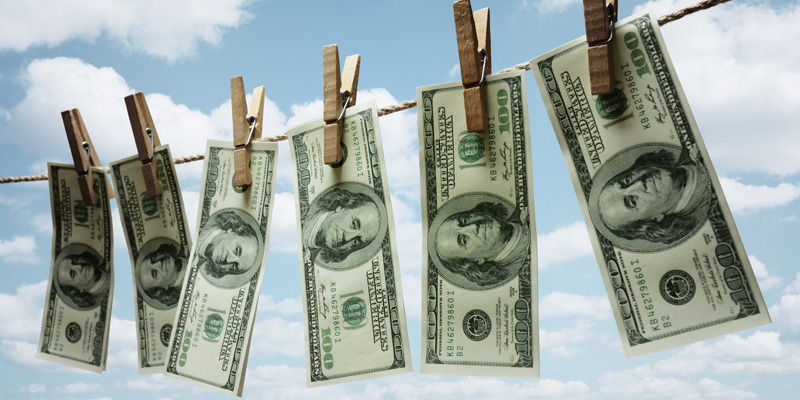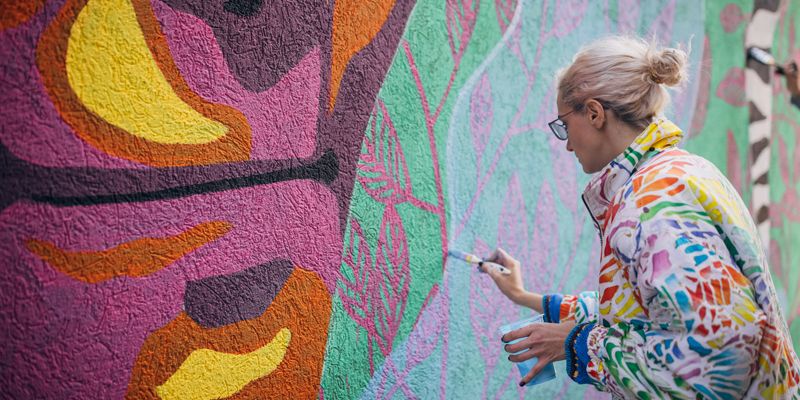May 2025 News
It’s Spring Cleaning Time For Your Finances

Just as the arrival of spring inspires us to declutter our homes, it’s also the perfect time to refresh and revitalize our financial lives. Think of it as spring cleaning for your money – a chance to organize, streamline, and ensure you’re on the right track toward your financial goals.
Where do you begin this financial deep clean? Start with your budget. Dust off your current spending plan and review whether it still aligns with your current income and priorities. Are there areas where you can trim expenses or reallocate funds more effectively? Spring is a time of renewal, so don’t be afraid to make necessary adjustments.
Next, tackle your accounts. Just like that drawer overflowing with forgotten items, you might have dormant bank accounts or unused credit cards. Consolidating or closing these can simplify your financial picture and potentially reduce unnecessary fees.
Organizing your financial documents is another crucial step. Gather statements, tax returns, and investment information. Consider creating a system, whether digital or physical, that makes it easy to access important information when you need it. A little organization can save you significant time and stress down the road.
Don’t forget to check your credit reports. Spring cleaning is all about identifying and fixing what’s not right. Reviewing your reports from all three major credit bureaus can help you spot any errors or fraudulent activity that could negatively impact your credit score.
Finally, take a close look at your subscriptions. How many streaming services, apps, or memberships are you paying for but rarely use? Spring cleaning is the perfect opportunity to cancel those forgotten or unwanted subscriptions and free up some extra cash each month.
By dedicating some time to these financial spring-cleaning tasks, you can gain greater control over your money, identify areas for improvement, and cultivate a healthier and more organized financial future. So, roll up your sleeves and enjoy the feeling of a fresh start for your finances!
Get Out & Discover Colorado’s Free Public Art

Colorado is arguably one of the most beautiful states in the country (just ask any Coloradan!). But because of the state’s vast expanses of mountains, grasslands, lakes, rivers, and more, it’s easy to forget that there are human-made areas of beauty to take in as well, chiefly in the world of art. As it turns out, especially as we near the summer season, there’s a lot to see that’s been human-crafted. You just need to know where—and sometimes when—to look.
We’ve curated a selection of art exhibits and installations that are free to the public and well worth checking out.
- Running through May 3, when the week culminates in an event filled with music and art (including free mural paintings and dance performances), Westminster Arts Week is a celebration of creators and artists throughout Westminster.
- The A.R. Mitchell Museum of Western Art in Trinidad features art that celebrates the beauty and rugged nature of the West. Be sure to stop by for the artist lecture series, as well as opening reception events, which are free to the public and feature light food and drink. Different artists are featured on a regular rotation, so residents of and visitors to Trinidad can delight in seeing new talent.
- For an ongoing window to the creations of local artists, visit the Arvada Center, where you can view various rotating exhibitions inside as well as tour the outdoor sculpture garden, a 17-acre open space chock-full of large-scale pieces all described on the free audio tour. If you visit May 13–18, you can check out the spring pottery sale, featuring one-of-a-kind functional pottery.
- Greenwood Village is home to the Curtis Center for the Arts, which features free rotating art exhibits. Beginning May 16, the Pastel Society of Colorado will present a Mile High International Exhibition of pastel paintings. On top of that, you can take a self-guided tour to explore the various sculpture, mural, and art installations throughout Greenwood Village.
- On Memorial Day weekend, you can stroll through the booths at the Denver Arts Festival, a showcase of Colorado’s best artists, as well as a few from around the country. Kids can get in on the fun at the Kids Art Zone, and live music from local bands will be playing on both days.
- At the end of the month, take in the Park Hill Art Festival, a juried fine art and craft show that features over 100 professional artists. The event is close to the Denver Zoo, City Park, and the Denver Museum of Nature and Science, so you can easily make a day of the excursion.
And that’s just where the list begins; other areas—including Lakewood, Aurora, and Denver—all have inspirational public art selections that are well worth the time and the viewing. Just get on out there this spring—and into this summer!—to enjoy it.
Protect Your Nest Egg from Crypto Fraud

In our increasingly digital world—and fluctuating economic conditions—scammers are upping their bets on crypto, particularly with the retirement-aged crowd. If you’ve been worried about your nest egg and looking for ways to protect it, be aware that some of the “get rich quick” or “save your funds” schemes out there are actually ways to get you to part with your hard-earned cash. Luckily, understanding the fraud is a good start toward protecting yourself against it.
Cryptocurrency (such as Bitcoin or Ether) has grown in acceptance, particularly in the last five years. It is an electronic form of currency that some people prefer because it allows them to make quick online payments, avoid traditional transaction fees banks might charge, and remain anonymous, among other reasons. The anonymity, in particular, makes crypto popular with scammers—it’s hard to trace (and therefore recover) stolen crypto funds.
One increasingly prevalent crypto scam involves “crypto kiosks” or “Bitcoin ATMs,” which are like ATMs but for crypto and are usually found in convenience stores, gas stations, and smoke shops. They’re legit exchange machines, but they can also entrap victims of fraud.
The scam can take on different appearances: First, the con artist finds you by social media, emails, texts, or phone. Then they offer urgent justification for you to take cash from your bank account and “protect” it by putting it in a crypto kiosk. The lies vary, but they can include:
- The scammer claiming to be an “investment manager” who can grow your wealth.
- The con artist posing as a celebrity who can multiply your crypto investment.
- The fraudster claiming to be from a well-known company like Amazon, UPS, FedEx, or your bank, “warning” you that there is fraud on your account and you need to fix it by buying crypto.
No matter the story they’re telling, the result will always be the same—if you move your cash into the Bitcoin ATM, the predator will immediately move it to their account, untraceable and permanently gone.
To avoid being trapped in the scam, protect yourself by taking these measures:
- Slow down. Scammers use urgency to pressure victims into parting with their money. Check out the facts and speak with someone you trust to verify what’s going on.
- Be wary of unexpected contact. Don’t click links in texts or emails unless you know the sender. If a stranger or a pop-up asks you to call a number, look up the business and use the number you research to determine if it’s legit.
- Use caution when you’re asked to keep an investment a secret. Legitimate advisors won’t say that to you. And remember that if someone promises something that seems too good to be true, it probably is.
Finally, don’t fall for the lie that crypto and/or a Bitcoin ATM is the only way to protect your money—it’s not. Anyone who tells you this doesn’t have your best interests in mind.
A New Option for Two-Factor Authentication

Two-factor authentication (2FA) is a security approach that requires users to present two factors for authentication for accessing an account. This approach has become critical for organizations to protect user accounts, data and assets, and for users to stay safe, especially as cybercriminals perfect ways to break through single-factor security.
2FA enhances security by requiring users to provide two distinct forms of identification to verify their identity, which generally fall into three categories:
Something You Know: This factor relies on information that the user possesses in their memory. Examples include passwords, PINs, or security questions.
Something You Have: This factor involves a physical item in your possession such as SMS codes or authenticator apps.
Something You Are: This factor uses unique biological characteristics of the user and can include things like a fingerprint scan or facial recognition.
Both 2FA methods used must come from different categories. For instance, using a password and a security question are both “something you know” and do not constitute 2FA.
Bellco has just added the option for members to receive one-time passcodes via an authenticator app as an additional form of 2FA outside of text messages or voice calls.
First, you will need to download an authenticator application. There are many different apps that you can choose from in the Google Play™ store or Apple Store℠. Companies like Google™, Microsoft®, DUO®, and others offer versions of an authenticator app. Once you have an authenticator app on your device, visit the link below to learn how you can add the ability to receive your one-time passcode via an authenticator app as one of your available 2FA security options.
Get started through Online Banking or click the button below to learn how to sign up.
Google and Google Play are trademarks of Google LLC. Apple Store is a service mark of Apple Inc. Microsoft is a registered trademark of the Microsoft Corporation. DUO is a registered trademark of Cisco Technology, Inc.


